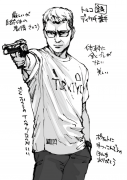I'm a beginner and I'm working on accuracy a lot. Been doing a lot if dry fire drills with my m&p 9c. At the range I can hold shots within the 7 circle at 10 yards but grouped to the left.
So I've heard to keep main hand looser and support hand firm. When I'm doing the drill of balancing a casing on the front sight I see the most controlled movements when my main palm is almost pushing forward on the backstrap and support hand almost pulling back. I haven't tested this on the range yet. But does this seem correct to more experienced shooters? I'm using a thumb forward grip.



 Reply With Quote
Reply With Quote

